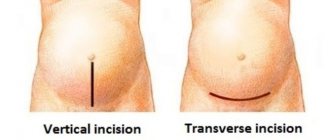It just so happens in our country that a new mother in labor will be asked about the weight of her baby before her name.
But is the baby’s weight at birth really that important and how does it affect the course of pregnancy? All your life you have dreamed of a man like the one in Vasnetsov’s painting “Bogatyrs”. Not three at once, of course, but one still appeared in your life. And so you rejoice, you cannot rejoice enough. It’s like being behind a stone wall with him, and so caring, in general, a truly brave Russian fellow. You have a happy family and you are expecting a baby. Only before pregnancy it seemed to you that your future daughter would inherit your genetics, would be small and petite, and more like a Frenchwoman than a Russian princess of an indeterminate weight category. But a boy is born, weighing 4500 and having red cheeks. And the birth goes well.
These are all fairy tales, you think. How can this be? But a lot depends not on the weight of the baby itself, but on the individual characteristics of the mother’s body. You can suffer with a child weighing two and a half kilograms and calmly give birth to a four-kilogram one.
In general, during pregnancy, your doctor is simply obliged to monitor the possible weight of your unborn child. This is necessary in order to establish how the baby is developing and what the birth will be like. The exact weight of the child can be calculated using ultrasound diagnostics.
There is an opinion that if the child is too large, the mother is recommended to have a caesarean section. But it is not so. In order to prescribe a caesarean section, it is necessary to know exactly the individual physiological characteristics of the woman’s body, in particular the width of the pelvis.
If the pelvis is too narrow, or the baby’s head is not commensurate with the woman’s pelvis, or the baby is breech, these are clearer indications for a caesarean section.
In other cases, the expectant mother will be able to give birth to a baby naturally, no matter what his weight. The most important thing is to remain calm and find a good doctor who can determine the presence of abnormalities in time.
What fruit is considered large?
There are certain norms for the weight and height of the baby at the time of birth. It is considered normal when a child with a height of 48–54 cm weighs up to 4,000 kg. If the baby weighs from 4 to 5 kg at the time of birth, then they talk about a large fetus during pregnancy. But it’s strange that in this case the height of the children is not taken into account. After all, large babies are always taller than children, who, as they say, are part of the norm. The height of large babies is usually 54 – 56 cm.
According to statistics, today the number of large children accounts for 5-10% of all pregnancies. Doctors believe that this is due to improved working conditions, nutritious and healthy nutrition, as well as the living conditions of pregnant women.
There are also cases of the birth of giant babies: weight over 5 kg. But such cases are recorded much less frequently.
How to identify a large fruit?
Starting from the 12th week of pregnancy, at each examination the doctor listens to the baby’s heartbeat, measures the girth of the pregnant woman’s hips and abdomen, and the pregnant woman’s weight and blood pressure are also measured in the pre-medical office. All these measurements are not made in order to indicate to the woman how much she has gained and to offend her. All this is done in order to clearly paint a picture of the course of pregnancy and monitor the health of the baby and the expectant mother.
Diagnosis of a large fetus during pregnancy is made not only on the basis of examination of the woman. An experienced doctor always takes into account heredity and diseases. The doctor should ask about the father’s physique and what weight the future parents themselves were born with. If, from all the examination and interview data, a suspicion of a large fetus is diagnosed, only then is a referral for an ultrasound scan given. Only on the basis of an ultrasound examination can the estimated weight of the baby be calculated.
This unscheduled study determines the size of the fetal head, the diameter and circumference of the abdomen, and the length of the baby’s femur and humerus. And based on these data, it becomes possible to calculate the estimated weight of the fetus.
conclusions
A child is always a big responsibility. For 9 months, the expectant mother cares for and bears her baby, and then takes care of him and raises him, but before that she still needs to give birth. A large baby or a low-birthweight birth process is inevitable and has its own subtleties that the girl will have to endure steadfastly. During pregnancy, you must adhere to the recommendations of the leading doctor, and in no case self-medicate. It is important to note that the belly at 4 months of pregnancy, or rather its size, is certainly not an indicator of the diagnosis being studied; only a doctor can determine this and prescribe a further plan of treatment and action.
Causes of a large fetus
There can be many reasons why you are carrying a hero. Some of them are associated only with heredity, some are a reflection of the mother’s lifestyle or an echo of her health. Let us dwell in more detail on the reasons that the fetus weighs more than normal during pregnancy.
1. Increased pregnancy duration. There are two terms that are associated with a long period of gestation: prolongation of physiological pregnancy and post-term pregnancy. The prolongation is due to the fact that the due date was incorrectly set. In this case, a healthy baby is born, but 10-14 days later than the due date set by doctors. The health of the baby is determined by the absence of signs of post-maturity and aging of the placenta. In case of a true post-term pregnancy, a baby is born with the following signs:
- skin wrinkling;
- greenish or grayish tint of amniotic fluid;
- lack of vernix lubrication; dryness.
2. A disease such as diabetes can lead to a large fetus during pregnancy. A pregnant woman who has diabetes should be examined more thoroughly than others. Among such women, the statistics of having large children is much higher.
Such pregnant women should be hospitalized no later than 32 weeks of pregnancy. In the hospital, they undergo a thorough examination, after which a decision is made on the timing of delivery. If a diabetic patient is carrying a large fetus, then the issue of artificial induction of labor is decided no earlier than 36 weeks. This decision is also made when the woman’s health deteriorates (preeclampsia, low blood sugar, polyhydramnios). In this case, childbirth takes place under the careful supervision of a therapist. Insulin is administered throughout labor. Insulin treatment continues after childbirth, depending on test results.
3. Hemolytic disease of the fetus is a serious cause of large fetus development during pregnancy. This disease is caused by Rh incompatibility between mother and child. Occurs in women with a negative Rh factor, when the baby inherits the positive Rh factor of the father. As a result of this disease, not only does the baby's hemoglobin level decrease and jaundice appear, but also excess weight due to the accumulation of fluid in the body cavities (swelling appears), and the spleen and liver become enlarged. Read more about Rhesus conflict →
4. Heredity plays an important role in the development of a large fetus. If the baby's mom or dad is tall and large at the moment, then there is a high probability that the child will be big. Also today, small parents could be born large. Then the baby can inherit exactly this fact and will also be a hero.
5. There is also a tendency for the fetus to develop larger in subsequent pregnancies. According to statistics, the second and subsequent children are born weighing 30% more than their older brothers and sisters. This is primarily due to the psychological factor (the mother no longer experiences such enormous stress and fear during her second pregnancy). The second reason is the readiness and training of the woman’s body to bear a baby (now the metabolism between mother and baby improves due to better blood circulation).
6. The diet of a pregnant woman can also affect the size of the baby. A large amount of food containing carbohydrates (baked goods, sweets) contributes to obesity of the mother and child. In this case, the baby’s body begins to work like the mother’s and gains excess weight. Obesity can develop already in the womb.
Causes of low birth weight babies
Often, a pathology such as asymmetrical malnutrition appears in the third trimester due to any difficulties during gestation or hereditary diseases in the expectant mother. Various diseases that affect changes in blood circulation lead to a slowdown in intrauterine growth of the fetus and its correct and normal development. Hereditary/chronic diseases of a girl, during which the female body experiences intoxication and lack of oxygen, affect the baby, which increases the development of malnutrition.
The question of maternal nutrition during pregnancy and its influence on the development in the womb and the birth of a child with low body weight is still open. Statistically, girls who constantly adhere to a low-calorie diet most often reproduce underweight babies. But we should not forget the data that show that even during the Second World War, during the siege of Leningrad, children appeared (quite often) with completely normal indicators. The age of the expectant mother also occupies an important place here: girls under 18 and after 35 have a much greater chance of fetal malnutrition during the period of bearing a baby. This is difficult for the body of a fairly young girl, but an older mother’s body most likely already has chronic diseases.
Danger with large fruit
The final stage of pregnancy is childbirth; this is one of the most important and difficult moments of expecting a baby. Carrying a large baby can cause certain difficulties during the delivery process. These difficulties can affect both the health of the mother and the health of the newborn.
First of all, with a large fetus during pregnancy, a discrepancy between the sizes of the baby's head and the mother's pelvis . Even if the pelvis is not narrow, the head of a large baby may not pass through the birth canal. In this case, even good, strong labor activity will not be able to ensure natural delivery.
The head of a large fetus stands high in the pelvic cavity, this is the reason for the lack of differentiation into anterior and posterior amniotic fluid. This difference from normal physiological labor causes early rupture of amniotic fluid. If the fetus is large, then the umbilical cord or the baby’s hand may fall out along with the rupture into the vagina. In this case, immediate surgical intervention is required. Early rupture of water slows down the process of uterine dilatation, and makes the period of contractions very painful. The fact that the baby is without water for a long time can cause infection of him and the uterus.
The development of a large fetus during pregnancy can cause labor disruption . This disorder is characterized by good and strong activity in the first stage and a decrease in labor activity in the later stages of labor. As a result, the woman in labor gets tired and cannot push. Also, cases of disruption of the nervous and cardiovascular systems are not uncommon. A large fetus in this situation suffers from a lack of oxygen - hypoxia. This disorder may be characterized by very weak contractions in the first stage of labor.
During pushing, when the baby's head takes the shape of the woman's pelvis, the problem of uterine rupture . This occurs, again, due to the discrepancy between the sizes of the small pelvis and the head of a large fetus.
The occurrence of genitourinary or rectovaginal fistulas is not a rare occurrence during the birth of large children. This is due to the prolonged standing of the baby's head in the woman's pelvic area. In this case, necrosis of the tissues of the bladder, rectum and urethra occurs. The dead tissue is then rejected, forming fistulas. The problem can only be solved by surgical intervention after childbirth.
the nerve of the leg may , and there is also a possibility of damage to the joint of the pubic bones. This is reflected in the gait of the young mother, limping and pain when moving her leg. If the degree of nerve damage is high, then surgery is required to solve the problem. For mild paresis, bed rest and a bandage are recommended. According to the doctor's decision, painkillers may be prescribed.
All of the above can occur even before the birth of the baby’s head, which was considered large during pregnancy. But even when, it would seem, the most difficult thing is over, problems can arise. After the birth of the head of a large fetus, difficulties may arise in removing the baby's shoulder girdle. If the child is large, then, first of all, the neonatologist pays attention to the condition of his collarbones and arms.
A discrepancy between the mother's pelvis and the baby's head can cause a cerebral hemorrhage in the child or a cephalohematoma. If there are no complications, then after 6-8 weeks the hematoma subsides without having any effect on the child’s health. Hemorrhage may also have no consequences for the development and health of the baby. It all depends on its size and the zone of outpouring.
We must not forget that a woman who has given birth to a large baby may have insufficient uterine contractions . As a result, bleeding may occur after the baby is born. The causes of bleeding include retained placenta in the uterus and ruptures of the tissues of the genital tract.
Possible problems after birth for mother and large newborn
Mother's problems:
- Bleeding can occur due to the fact that the contractility of the uterus is reduced, and the area of the wound surface at the placenta insertion site is quite high. In such cases, the gynecologist removes the unseparated parts of the placenta and performs a manual massage of the uterus to force its muscles to contract and stop bleeding.
- Ruptures of the perineum and vagina. To prevent serious injuries from occurring, the obstetrician-gynecologist performs a dissection of the perineum during childbirth.
- Slow involution of the uterus (problems of its reverse development).
- Anemia (decreased hemoglobin in the blood).
- Problems with milk production.
- Thromboembolism is the formation of blood clots in the vessels of the legs.
- Inflammatory diseases (endometritis, symphysitis, mastitis).
- A woman with diabetes may experience premature birth.
Problems in a newborn:
- Intrauterine hypoxia of the fetus threatens with asphyxia - cessation of oxygen access.
- Slowing down the period of adaptation of the child to environmental conditions.
- Neurological disorders: tremors and restless behavior due to impaired cerebral circulation or birth injuries.
- Purulent-septic complications in a large child can occur due to primary immunodeficiency.
- Endocrinologists may also notice abnormalities in a large child with developmental disabilities. Moreover, these features can appear not only in a newborn, but also in a large child a year later, and in a later period. Large children are predisposed to the development of diabetes and obesity; they are more likely to develop neuropsychiatric disorders and allergies.
What to do?
If, after your next examination with a doctor, you are told that you have a large fetus, you should not panic. A large fetus during pregnancy means the need for more careful monitoring in the future and during childbirth. Having learned that the baby is large, the doctor will first try to find out the reason.
If the cause is any pathology of fetal development or the woman’s health, hospital treatment will be prescribed. In this case, in most situations, the woman is under observation until childbirth, since there is a need for constant medication treatment.
If the cause of a large fetus is heredity or overeating of the mother, then a diet is prescribed. According to the diet, the mother should receive only healthy food that will not contribute to excess weight gain.
There is also no need to be afraid of childbirth when a large fetus develops. The only thing you need to do in advance is to talk to your doctor about the course of your labor. In some cases, a caesarean section is immediately prescribed, in others a wait-and-see approach is adopted.
Indicators for a caesarean section already during labor are the presence of signs of discrepancy between the baby's head and the mother's pelvis within 4 hours.
That is, if a natural birth is scheduled, then provided that labor progresses spontaneously and the waters break, the doctor can decide on an operation if there is a threat to the life of the mother or child.
Also, during the birth process, a caesarean section can be used if symptoms of uterine rupture appear.
Large fetus during pregnancy: what can a mother do to help?
Having considered the reasons for the development of a large fetus, we can understand that the mother’s first aid is a healthy diet even before conception (that is, getting rid of excess weight that the child may inherit) and proper nutrition during pregnancy.
It’s not for nothing that at every scheduled examination, the gynecologist gives recommendations on the amount of certain nutrients in each trimester of pregnancy. For example, the amount of carbohydrates per day in the last trimester should be only 300-400 g.
If the reason lies in heredity, then you should rely on the experience of doctors who will give competent advice, provide information about possible diets and successfully carry out delivery. In this case, diet comes first.
Yes, even during pregnancy, sometimes you need to sacrifice something. But you should be driven by your child’s heartbeat; it is for his sake that you need to deny yourself some pleasures.
Help with pathologies of a large fetus lies in the mother’s consent to receive medical care . If the baby is swollen, the spleen and liver are enlarged, you cannot hope for a miracle. All these symptoms are clearly visible on ultrasound and with proper treatment during and after childbirth, they may not affect the health and development of the child.
Remember, pregnancy is a wonderful time when a woman is already responsible not only for herself, but also for her new little life. A hero is a baby who, while still living in his mother’s womb, already requires special attention, and is not a reason to worry and be afraid.
Prevention and lifestyle features of a pregnant woman
- Healthy eating, you don’t need to eat for two, much less eat heavy carbohydrates and fats.
- If you are overweight, resolve this issue before giving birth so that the child is not born with the problem of obesity.
- The amount of carbohydrates should be no more than 400 g per day.
- During pregnancy, you need to move moderately and do simple regular exercises.
- Take care of the health of the unborn child, undergo all examinations in a timely manner and follow the recommendations of the leading gynecologist.
Be healthy and give birth to strong children!
Table of fetal weight by week of pregnancy
Doctors, based on the results of numerous studies, were able to compile a table that indicates the weight of the gestating baby at different stages of its stay in the womb. The data presented in the table are calculated averages that are observed in most cases. Since there are many factors that influence fetal development, the table shows upper and lower limits for weight and height.
When a woman undergoes an ultrasound during pregnancy, doctors determine the weight of the pregnant baby and compare it with the data in the table. This makes it possible to identify the presence of deviations in weight indicators and prescribe the appropriate examination to the woman to determine their cause.










